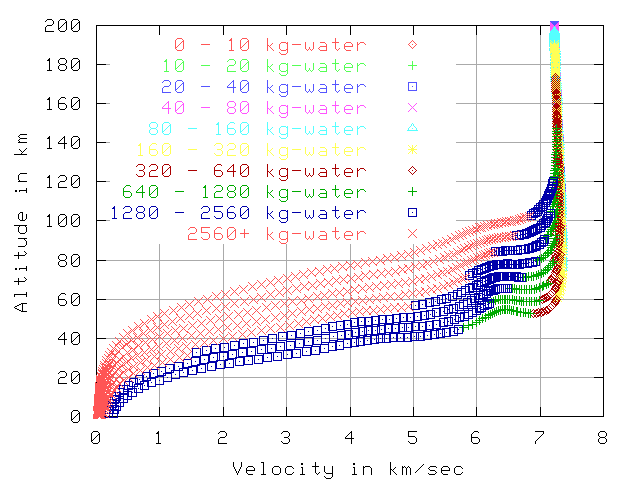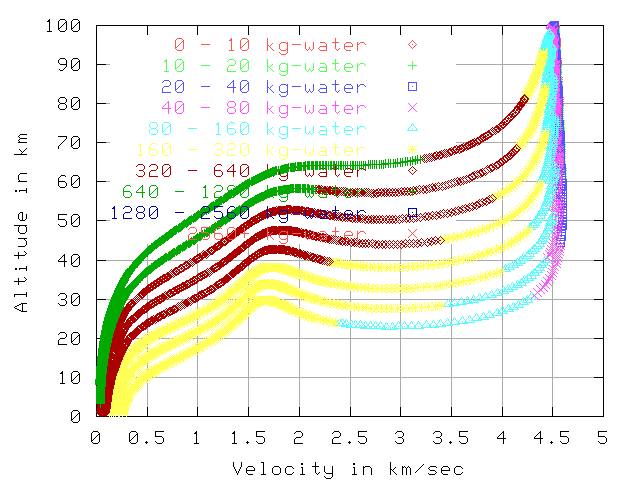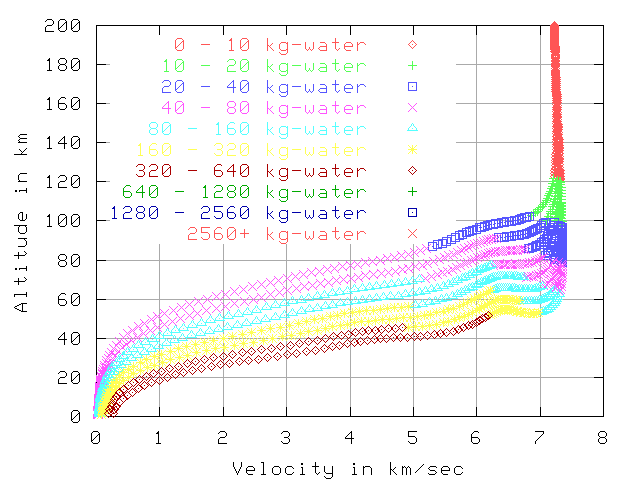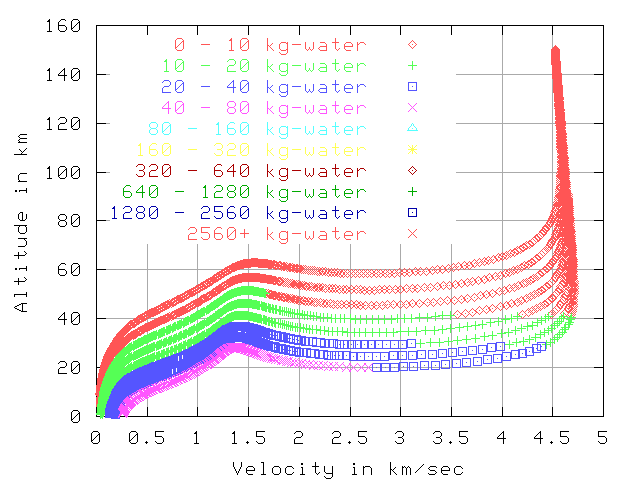
This is a continuation of reentry comparision between orbital speed reentry and tether release speed reentry. For details see above, but basically there are 8 vehicles with L/D 0.5 and 10,000 Kg each but drag-areas go from 5 to 640 sq-meters with largest area vehicle being the top curve.
These graphs don't take into account how much this layer of relatively cool steam will reduce the amount of heat reaching the vehicle. This effect will reduce the amount of water needed by a factor of 3 or 4.
Here we just use the heat of vaporization for water at standard temperature and pressure. If the water is contained under pressure, like in a pressure cooker, it will take more heat to vaporize it. It seems reasonable to have a set of pressure release valves so water is used as it is needed. There is some heat needed to bring the water up to boiling, which is not counted here.
For these reasons, the real water mass amounts should be lower than shown here.



One issue with transpiration/film-cooling/blowing/injection for reentry is that you want the flow to stay laminar. If adding in the cool gas causes turbulent flow you could end up with more heat and not less.
The nicest thing about transpiration is that you can just add water and your TPS is ready for another trip. Real reusability. An ablative TPS is only used once. So you have to make and inspect one each time, which is going to have higher costs and probably not be as safe.